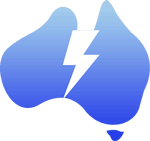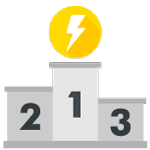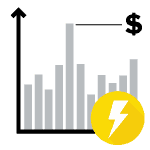Compare electricity prices with the experts
Get informed and save!

If you are looking to compare electricity prices, charges and feed-in tariffs – you’ve come to the right place. WATTever is Australia’s largest publisher of retail electricity and gas pricing information. We’re committed to sharing comprehensive information to help households and business take the power back and find the best deal.
You can choose to Find the Best Deal with our tailored comparison. Or get into the details for rates, supply charges, solar feed-in tariffs and more on the links below. WATTever’s up to date comparison tables include all retailers and publicly listed plans. Plus we cover home and business electricity plans. You won’t find this information anywhere else!
See below to find comparison summaries of;
the cheapest electricity rates,
best solar feed-in tariffs,
electricity usage rates and daily supply charges.
Compare VPP (battery) and EV plans,
Controlled Load rates, GreenPower rates along with fees and charges.
Also, you can check tariff periods, compare demand tariffs and find the official electricity plan fact sheets.
Start your FREE personalised electricity comparison here
All retailers compared.
Industry leading calculation engine.
100% online. No phone calls.
Want the low down on the most competitive electricity rates? Click the link below to compare the lowest electricity rate for each retailer from their publicly listed electricity plans. This covers homes and businesses in Sydney, Melbourne, Brisbane, Adelaide, Canberra, Hobart, Perth and Darwin. WATTever update rates every week after scanning electricity pricing from every retailer.
Solar feed-in tariffs (FIT) are the payment made to solar owners for the energy they generate and send back into the grid. So, if you have solar – or are about add panels, you’ll want to know about the feed-in tariffs on offer. Hit the links below see the latest solar feed-in tariffs for homes or business in ACT, NSW, NT, QLD, SA, TAS, VIC and WA. Plus we break out critical feed-in tariff conditions.
Got battery storage and want to find out about more about Virtual Power Plant (VPP) plans? We’ve got you covered. You’ll find a comparison below of the leading VPP programs in each state and the incentives offered to battery owners for sharing their energy back to the grid.
We’ve summarised the energy plans that are only available to Electric Vehicle owners so you can easily compare what’s on offer. Plus you can check out the cheapest ways to charge your Electric Vehicle. Compare EV charging costs by solar, off-peak, controlled load and general rates.
When you compare electricity prices, it can pay off to look ahead at the fees and charges that retailers apply. For example, if you might be moving soon, then review disconnection and connection fees along with any exit fees. Or perhaps, if you might miss paying a bill on time, find out in advance any late payments charges and reconnection fees that come with this. Click below for a rundown of Fees & Charges published by retailers in their electricity plan Fact Sheets. Where fee information is absent from Fact Sheets, this can be viewed in the retailers’ terms and conditions available on their website.
If you are on a Time Of Use or Demand Tariff, you’ll want to know the periods that charges apply for. Time Of Use (also known as Flexible or TOU) tariffs have different prices for electricity used at different periods of the day. Demand Tariffs have specific hours when added demand charges apply throughout the week. Also Demand Tariffs may vary across different seasons. Click below for a rundown of Time Of Use periods and Demand Tariff periods for all major electricity networks across Australia for residential and small business customers.
Latest electricity plans
WATTever’s technology and team actively monitors retailer websites to get the most up to date electricity plan information. Published here are the “Valid From” date of the latest market and regulated residential electricity plans for each retailer in each state, that are currently included in WATTever’s comparison service. It’s a great way of seeing the retailers that have recently released residential electricity plans and those retailers that haven’t.









